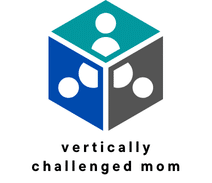How do you configure a secure file-sharing system using an OpenMediaVault on a custom-built server?

In today's digital age, efficient and secure file sharing is more critical than ever. Whether you're running a small business, a home office, or just need a reliable solution for your personal files, configuring a secure file-sharing system is essential. OpenMediaVault (OMV) offers a robust yet user-friendly platform for managing file sharing on a custom-built server. This article will guide you through the process, ensuring your data remains secure and easily accessible.
Understanding OpenMediaVault and Its Benefits
Before diving into the configuration, it's crucial to understand what OpenMediaVault is and why it’s a good choice for your file-sharing needs. OpenMediaVault is a free, open-source network-attached storage (NAS) solution designed to be simple to use while offering powerful features. Built on the Debian Linux distribution, OMV provides a solid foundation for your file-sharing system.
A découvrir également : What are the steps to install and configure a high-end sound card in a custom-built audio production PC?
One of the primary reasons to choose OpenMediaVault is its versatility. It supports various file systems, including EXT4, XFS, and Btrfs, ensuring compatibility with multiple storage devices. Additionally, OMV’s plugin architecture allows for expandability, enabling you to add functionalities such as media streaming, backup solutions, and cloud sync services.
OpenMediaVault also prioritizes security, an essential aspect of any file-sharing system. It includes features like user authentication, access control, and encrypted file transfers. These capabilities ensure that your data is protected from unauthorized access while being shared efficiently.
Cela peut vous intéresser : How do you optimize a gaming laptop with an external monitor for competitive eSports?
Preparing Your Custom-Built Server
The first step in configuring your secure file-sharing system is preparing your custom-built server. Building a custom server offers the advantage of tailoring the hardware to meet your specific needs. Whether you need ample storage, high performance, or energy efficiency, you can choose components that align with your requirements.
Hardware Selection
Selecting the right hardware is fundamental to the success of your server. Start with a reliable motherboard that supports your chosen CPU and has enough SATA ports for your storage devices. A multi-core processor, such as an Intel i3 or AMD Ryzen 3, provides a good balance between performance and power consumption.
Storage is another critical component. Choose high-capacity hard drives for data storage and a solid-state drive (SSD) for the operating system and essential applications. The SSD will ensure faster boot and response times, improving the overall performance of your server.
Assembling and Testing
Once you have your components, assemble your server carefully, ensuring all connections are secure. After assembly, run a series of tests to ensure everything is functioning correctly. This includes checking the BIOS settings, running memory tests, and ensuring the storage devices are recognized.
Installing Debian Linux
With the hardware set up, the next step is to install Debian Linux, the operating system on which OpenMediaVault is based. Download the latest stable version of Debian from the official website, create a bootable USB drive, and follow the installation prompts. Make sure to allocate sufficient space for the OS and additional software.
Installing and Configuring OpenMediaVault
With your custom-built server running Debian Linux, you are now ready to install OpenMediaVault. This section will guide you through the installation and initial configuration process, ensuring your file-sharing system is secure and functional.
Installing OpenMediaVault
Begin by updating your Debian system to ensure all packages are current. Open a terminal and run the following commands:
sudo apt update
sudo apt upgrade -y
Next, download and install OpenMediaVault using the following command:
wget -O - https://github.com/openmediavault/openmediavault/raw/master/README.md | sudo bash
Follow the prompts to complete the installation. Once installed, OMV can be accessed through a web browser by entering the server's IP address.
Initial Configuration
Log in to the OpenMediaVault web interface using the default credentials (username: admin, password: openmediavault). The first step is to change the default password to something more secure. Navigate to System > General Settings and update the admin password.
Next, configure your storage devices. Go to Storage > Disks to see all connected disks. Initialize any new disks and create file systems by navigating to Storage > File Systems.
Creating Shares and Users
OpenMediaVault allows you to create shared folders, making it easy to manage file access. Go to Access Rights Management > Shared Folders and click on Add. Specify the path and permissions for the shared folder.
To ensure secure access, create users and assign them to groups based on their access needs. Navigate to Access Rights Management > User and Group to add new users and groups. Assign appropriate permissions to each shared folder, ensuring that only authorized users have access.
Enhancing Security Measures
While OpenMediaVault offers built-in security features, it's important to take additional steps to further secure your file-sharing system. This section will cover advanced security measures to protect your data from potential threats.
Enabling SSH and Firewall
Secure Shell (SSH) allows for secure remote access to your server. Go to Services > SSH and enable the SSH service. Ensure that only key-based authentication is permitted by disabling password authentication. This adds an extra layer of protection against unauthorized access.
Implementing a firewall is also crucial. OpenMediaVault includes a firewall configuration tool under System > Network > Firewall. Configure rules to allow only necessary traffic and block potential threats. Consider limiting access to the OMV web interface to specific IP addresses.
Setting Up Secure Protocols
For file transfers, use secure protocols like SFTP or FTPS instead of standard FTP. These protocols encrypt the data, ensuring that it cannot be intercepted during transfer. To enable SFTP, go to Services > SSH and ensure the SFTP subsystem is enabled.
For FTPS, navigate to Services > FTP and enable FTP over SSL/TLS. This will encrypt FTP connections, providing a secure way to transfer files.
Regular Backups and Updates
Regular backups are essential for data protection. OpenMediaVault offers several backup plugins, such as rsnapshot and duplicati, which automate the backup process. Configure these plugins to regularly back up your critical data to an external drive or cloud service.
Keeping your system updated is equally important. Regularly check for updates to both Debian and OpenMediaVault, applying them promptly to protect against vulnerabilities. Enable automatic updates if possible to simplify this process.
Monitoring and Maintenance
Maintaining your secure file-sharing system is an ongoing process. Regular monitoring and maintenance ensure that your system remains secure and performs optimally over time. This section will cover key aspects of keeping your OpenMediaVault server in top condition.
Monitoring System Health
OpenMediaVault includes tools for monitoring system health. Go to Diagnostics > System Information to view real-time data on CPU usage, memory, and disk activity. Setting up email notifications for critical events, such as disk failures or high CPU usage, can alert you to potential issues before they become serious problems.
Performing Regular Audits
Regular audits of your system’s security settings and access logs are necessary to identify and address potential vulnerabilities. Check the System Logs regularly to review login attempts, access to shared folders, and other critical activities. Look for any unusual or unauthorized access attempts and take action as needed.
Cleaning and Updating
Over time, your server may accumulate unnecessary files and outdated software, which can affect performance and security. Regularly clean up old files and uninstall unused applications. Make sure all installed software, including plugins, is up-to-date. This not only improves performance but also ensures you have the latest security patches.
Reviewing User Access
Periodically review the users and groups on your server. Ensure that only active users have access and that their permissions are appropriate for their roles. Remove access for users who no longer need it to minimize the risk of unauthorized access.
Configuring a secure file-sharing system using OpenMediaVault on a custom-built server offers a powerful and flexible solution for managing your data. By understanding OpenMediaVault’s benefits, preparing your custom server, and following best practices for security and maintenance, you can create a system that is both efficient and secure.
With the steps outlined in this article, you are well-equipped to set up and maintain a robust file-sharing system tailored to your needs. Whether for personal use or a small business, your file-sharing system will be capable of handling your data securely and efficiently.
